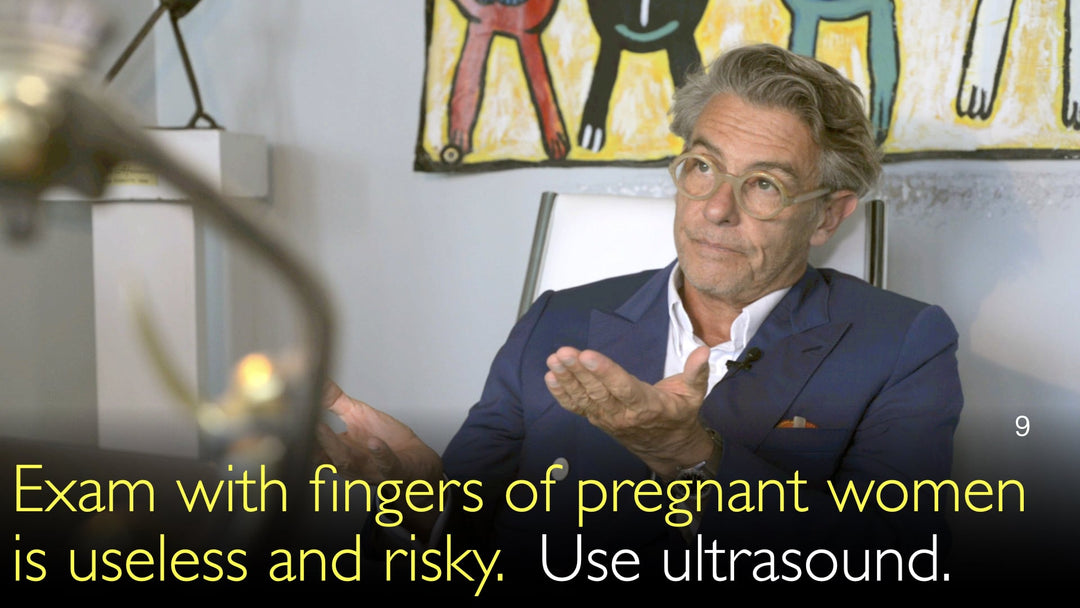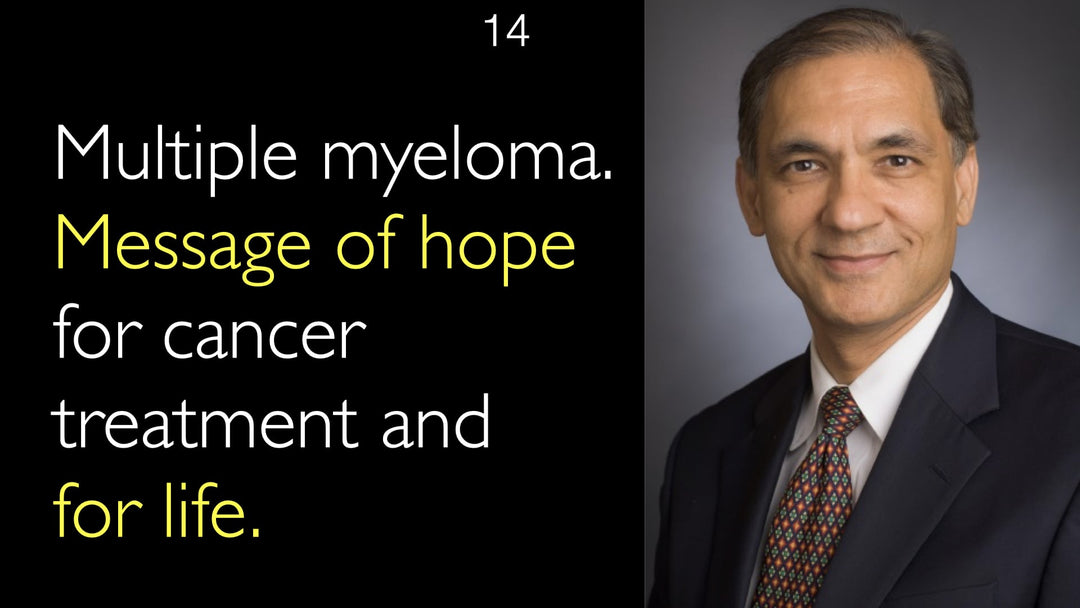Dr. Yves Ville, MD, en ledande expert inom mödra-fetalmedicin, förklarar varför digital cervixundersökning är föråldrad och riskfylld. Han belyser hur transvaginal ultraljud ger en överlägsen och objektiv mätning av cervikallängd för att förutsäga risken för för tidig födsel. Dr. Ville diskuterar också MR:s avgörande roll vid diagnostisering av komplexa placentaförhållanden som placenta accreta, vilket ger en oöverträffad anatomisk detaljnivå för säkrare graviditetsbehandling.
Modern mödravård: Digitala undersökningar ersätts av ultraljud och magnetkamera (MRI)
Hoppa till avsnitt
- Risker och otillförlitlighet med digital cervixundersökning
- Transvaginalt ultraljud för prediktion av för tidig födsel
- Förstå prediktivt värde vid cervixbedömning
- Magnetkamera (MRI) för detaljerad fostermorfologi och placentaanatomi
- Diagnostik av placenta accreta-spektrum med magnetkamera (MRI)
- Framtiden för funktionell avbildning under graviditet
- Fullständig transkription
Risker och otillförlitlighet med digital cervixundersökning
Dr. Yves Ville, MD, framhåller att digital undersökning av livmoderhalsen är en århundraden gammal metod som bör fasas ut under graviditet. Han betonar att denna teknik är opålitlig utanför aktiv förlossning. Metoden är fylld av felkällor och ger både falskt positiva och falskt negativa resultat.
Viktigare är att Dr. Ville pekar på den betydande infektionsrisk som är förknippad med digital undersökning. Han förklarar att en till synes lång livmoderhals kan vara öppen inuti, och att införa fingrar kan leda till bakteriekolonisering av fosterhinnorna. Dessutom kan en livmoderhals kännas kort vid beröring men visa sig lång vid ultraljud, vilket visar på metodens grundläggande otillförlitlighet.
Transvaginalt ultraljud för prediktion av för tidig födsel
Dr. Yves Ville, MD, förespråkar transvaginalt ultraljud som den objektiva guldstandarden för att bedöma risken för för tidig födsel. Denna teknik mäter cervikallängd exakt och kan upptäcka kritiska förändringar, som trattbildning, där livmoderhalsens inre öppning börjar vidgas. Ultraljud ger en tydlig visuell bedömning som är omöjlig att få med fysisk undersökning.
Dr. Anton Titov, MD, diskuterade framgångarna med Dr. Ville, som noterade metodens särskilda betydelse för högriskgraviditeter. För kvinnor med tidigare prematur förlossning eller flerfödsel (tvillingar/trillingar) ger en lång cervikalmätning stor trygghet. Denna objektiva data har i många kliniska studier visat sig överlägsen digital undersökning.
Förstå prediktivt värde vid cervixbedömning
En nyckelstyrka hos ultraljud, som förklaras av Dr. Yves Ville, MD, är dess utmärkta negativa prediktiva värde. När cervikallängden är lång är risken för för tidig förlossning mycket låg. Detta ger avgörande lugn för både patienter och kliniker i högrisksituationer.
Dr. Ville klargör att även om ultraljud är långt bättre än digital undersökning, innebär en kort livmoderhals inte alltid för tidig förlossning. Det positiva prediktiva värdet är inte lika starkt. Detta har lett till forskning om kompletterande tester, som fetal fibronectin, för att förbättra noggrannheten i att identifiera kvinnor med kort livmoderhals som faktiskt kommer att föda i förtid.
Magnetkamera (MRI) för detaljerad fostermorfologi och placentaanatomi
Under intervjun med Dr. Anton Titov, MD, redogjorde Dr. Yves Ville, MD, för magnetkamerans (MRI) två huvudsakliga tillämpningar under graviditet: morfologi och funktion. För anatomisk detalj är MRI ett extremt exakt verktyg, särskilt för avbildning av fosterhjärnan under tredje trimestern. Dess upplösning är mycket bättre än ultraljud sent under graviditeten.
Dr. Yves Ville, MD, noterar att MRI ger det bästa negativa prediktiva värdet för att utesluta hjärnavvikelser, särskilt efter misstänkt fosterinfektion. Medan ultraljud fortfarande överträffar MRI vid bedömning av placentafunktion med dopplerteknik, utvecklas MRI snabbt för funktionell avbildning av hjärnan, placentan och andra organ.
Diagnostik av placenta accreta-spektrum med magnetkamera (MRI)
Dr. Yves Ville, MD, identifierar MRI som ett utmärkt verktyg för att diagnostisera placenta accreta-spektrumstörningar. Detta livshotande tillstånd uppstår när placentan tränger för djupt in i livmoderväggen utan normalt skiljevävnad. Spektrumet omfattar placenta accreta, increta och den allvarligaste formen, percreta, där placentan tränger igenom livmoderväggen.
Dr. Yves Ville, MD, förklarar att MRI är särskilt viktigt när placentan sitter på livmoderens bakvägg, där ultraljud är mindre effektivt. Undersökningen kan tydligt visa invasionsdjupet och bedöma inblandning av närliggande moderskärl. Denna detaljerade anatomiska information är avgörande för kirurgisk planering och kan också definitivt utesluta diagnosen för att lindra patientens oro.
Framtiden för funktionell avbildning under graviditet
Diskussionen mellan Dr. Anton Titov, MD, och Dr. Yves Ville, MD, riktade blicken mot framtiden för prenatal avbildning. Medan MRIs anatomiska tillämpningar är väl etablerade, är dess funktionella roll fortfarande under utveckling. Forskning pågår för att använda MRI för att utforska hjärnfunktion och detaljerad placentaperfusion.
Dr. Ville sammanfattar att integrationen av dessa avancerade avbildningsmetoder representerar den nya vårdstandarden. Att ersätta subjektiva digitala undersökningar med objektiva ultraljud och MRI leder till mer exakta diagnoser, bättre riskbedömning och i slutändan säkrare utfall för både mor och barn.
Fullständig transkription
Dr. Anton Titov, MD: Du är också expert på förebyggande av för tidig födsel. Du publicerade viktig forskning om transvaginal ultraljudsundersökning för att mäta cervikallängd. Detta kan förutsäga risken för förtida fosterhinnebrott, för tidig födsel och allvarliga komplikationer för modern och barnet. Kan du berätta om ditt arbete med att förebygga för tidig förlossning?
Dr. Yves Ville, MD: Precis. Obstetrik har i århundraden, ja tusentals år, byggt på digital undersökning av livmoderhalsen – vilket är det sämsta vi kunnat komma på. Den är värdelös under graviditet. Den används mindre i den anglosaxiska världen, och det är mycket bra.
Jag anser att ingen gravid kvinna någonsin bör undersökas digitalt under graviditeten. Den enda gången digital undersökning av livmoderhalsen är användbar är när en kvinna är i förlossning. Utanför det är metoden full av falskt positiva och falskt negativa resultat.
Digital undersökning av livmoderhalsen ökar infektionsrisken. En lång livmoderhals kan vara helt öppen inuti, med fosterhinnor som koloniserats av bakterier, och din digitala undersökning kommer ändå att verka normal.
En livmoderhals kan kännas kort med fingrarna men vara lång på ultraljud, med en inre mun som sitter högt upp. Och när en kvinna har fött en gång är livmoderhalsen aldrig helt stängd igen. Att säga "jag kan inte sätta in fingret" bevisar alltså ingenting. Och om du gör det, bevisar det fortfarande inget.
Så ultraljud kom som den mest objektiva undersökningen för riskbedömning av prematuritet. En kort livmoderhals eller en livmoderhals som är öppen inuti – så kallad trattbildning – kan innebära hög risk, även om den är lång. Ultraljud är mycket exakt för detta.
Och viktigast av allt: i en högrisksituation, som hos kvinnor med tidigare prematur förlossning eller flerfödsel, ger en lång livmoderhals på ultraljud ett extremt högt negativt prediktivt värde för för tidig förlossning.
Så ultraljud har i många kliniska studier visat sig överlägset digital undersökning, med ett utmärkt negativt prediktivt värde. Det är först när livmoderhalsen är kort och det finns sammandragningar som det blir mer komplext. Även om ultraljud är bättre här, är det positiva prediktiva värdet fortfarande inte lika högt.
Därför har man arbetat med kompletterande diagnostiska tester, som fibronectin, för att förbättra det positiva prediktiva värdet för för tidig förlossning. Men det negativa prediktiva värdet med ultraljud är utmärkt.
Så ultraljud inom obstetrik har blivit ett kliniskt verktyg. Även om det är en oxymoron – det är en apparat, inte kliniskt i traditionell mening. Den bästa kliniska undersökningen är vaginalt ultraljud inom obstetrik.
Dr. Anton Titov, MD: Tack, det är mycket viktig information. Du är också en ledande expert på magnetkamera (MRI) för diagnostik av problem under graviditet, både för den ofödda modern och det utvecklande barnet. MRI av placentan kan identifiera viktiga riskfaktorer för fostret, modern och det framtida barnet. Hur kan MRI användas för att diagnostisera problem i placentan? Och vad är framtiden för MRI inom graviditetsdiagnostik?
Dr. Yves Ville, MD: Schematiskt finns det två typer av förväntningar på MRI. Den ena handlar om morfologi, den andra om funktion. För morfologi är MRI ett extremt exakt verktyg. Både för fosteranatomi och särskilt hjärnan är MRI oöverträffat, mycket bättre än ultraljud, särskilt sent under graviditeten.
När det gäller funktion är ultraljud idag mycket mer exakt än MRI för att förutsäga funktionella problem med placentan, till exempel med dopplerteknik för navelsträng och foster. MRI utvecklas för närvarande för att utforska hjärnans funktion, vissa organs funktion och placentans funktion.
Men hittills har MRI inte uppnått samma kliniska prestandanivå. Även om man tittar på, återigen, anatom...








